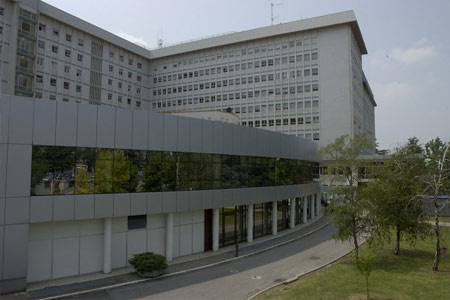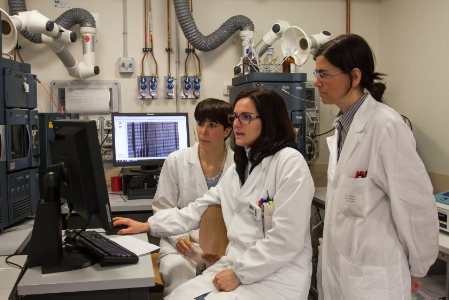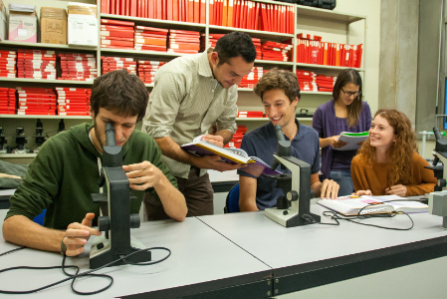- Autori:
-
Broganelli, P; Titli, S; Lallas, A; Alaibac M. Annetta, A; Battarra, V; Brunetti, B; Castagno, I; Cavicchini, S; Ferrari, A; Ghigliotti, G; Landi, C; Manganoni, A; Moscarella, E; Pellacani, G; Pizzichetta, M. A; Rosina, Paolo; Rubegni, P; Satta, R; Scalvenzi, M; Stanganelli, I; Stinco, G; Zalaudek, I; Zampieri, P; Argenziano, G.
- Titolo:
-
Spitz/Reed nevi: proposal of management recommendations by the Dermoscopy Study Group of the Italian Society of Dermatology (SIDeMaST)
- Anno:
-
2014
- Tipologia prodotto:
-
Articolo in Rivista
- Tipologia ANVUR:
- Articolo su rivista
- Lingua:
-
Inglese
- Referee:
-
No
- Nome rivista:
- GIORNALE ITALIANO DI DERMATOLOGIA E VENEREOLOGIA
- ISSN Rivista:
- 0392-0488
- N° Volume:
-
149
- Numero o Fascicolo:
-
5
- Editore:
- Edizioni Minerva Medica:Corso Bramante 83-85, 10126 Turin Italy:011 39 011 678282318, EMAIL: journals.dept@minervamedica.it, INTERNET: http://www.minervamedica.it, Fax: 011 39 011 674502
- Intervallo pagine:
-
601-606
- Parole chiave:
-
Adult; Age of Onset; Child; Child, Preschool; Diagnosis, Differential; Disease Management; Disease Progression; Humans; Infant; Melanoma; Nevus, Epithelioid and Spindle Cell; Remission, Spontaneous; Skin Neoplasms; Watchful Waiting; Dermoscopy
- Breve descrizione dei contenuti:
- Spitz nevus is a benign melanocytic neoplasm mostly appearing in the pediatric age and clinically consisting of a single, pink, red or brown papule, mainly observed on the face and limbs and characterized by an initially rapid growth. Reed nevus is the pigmented variant of Spitz nevus, which appears more frequently on lower limbs and has equally dynamic morpho-evolutive aspects.
Histopathologically, both Spitz and Reed nevi are typified by a proliferation of large epithelioid and/or spindle-like melanocytes. Therefore, the 2 entities will hereafter be referred to under the “umbrella” term Spitz/Reed nevus”.
The diagnosis of the most typical variants of Spitz/Reed nevus does not generally pose any problems of interpretation, especially in the pediatric age. On the other hand, the diagnosis of atypical forms is
more complex, due to the morphologic overlap with atypical Spitz/Reed tumor and Spitzoid melanoma. The latter is particularly relevant for Spitz/Reed nevi arising in adults.
Recent advances in the histopathologic classification of Spitz/Reed nevi have improved the reliability of microscopic diagnosis, narrowing the interpretative “grey areas”. Furthermore, the gradually acquired experience in the use of dermoscopy and videodermoscopy along with data provided from longitudinal studies concerning the evolution of Spitz/Reed nevi, facilitated the more accurate diagnosis and appropriate management of pediatric Spitz/Reed nevi.
By combining the existing evidence and our own experience, our purpose was to provide a comprehensive summary on the clinical and dermoscopic characteristics of Spitz/Reed nevi, aiming to allow clinicians better diagnosis and management of Spitzoid lesions.
- Id prodotto:
-
90147
- Handle IRIS:
-
11562/933580
- ultima modifica:
-
26 novembre 2022
- Citazione bibliografica:
-
Broganelli, P; Titli, S; Lallas, A; Alaibac M. Annetta, A; Battarra, V; Brunetti, B; Castagno, I; Cavicchini, S; Ferrari, A; Ghigliotti, G; Landi, C; Manganoni, A; Moscarella, E; Pellacani, G; Pizzichetta, M. A; Rosina, Paolo; Rubegni, P; Satta, R; Scalvenzi, M; Stanganelli, I; Stinco, G; Zalaudek, I; Zampieri, P; Argenziano, G.,
Spitz/Reed nevi: proposal of management recommendations by the Dermoscopy Study Group of the Italian Society of Dermatology (SIDeMaST)
«GIORNALE ITALIANO DI DERMATOLOGIA E VENEREOLOGIA»
, vol.
149
, n.
5
,
2014
,
pp. 601-606
Consulta la scheda completa presente nel
repository istituzionale della Ricerca di Ateneo 








